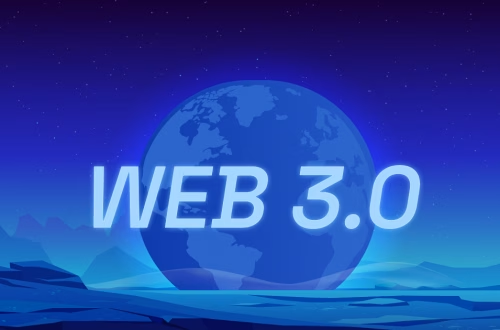Here’s the detailed HTML-formatted article as per your instructions:
What is a Crypto Oracle and How It Works
Summary:
A crypto oracle is a critical component in blockchain ecosystems that bridges the gap between off-chain data and on-chain smart contracts. It acts as a data feed, providing external, real-world information to decentralized applications (dApps). Oracles are essential for executing smart contracts that rely on external inputs like price feeds, weather data, or sports scores. Without oracles, blockchains remain isolated, limiting their practical applications. Understanding how they work helps users grasp the broader potential of decentralized systems and their reliance on trusted data sources.
What This Means for You:
- Access to Real-World Data in DeFi: Crypto oracles enable decentralized finance (DeFi) platforms to function by supplying accurate price feeds for assets. Without them, lending, borrowing, and trading protocols couldn’t operate reliably.
- Actionable Advice: When using DeFi apps, verify which oracle they rely on (e.g., Chainlink, Band Protocol) to ensure data accuracy and security. Trusted oracles reduce the risk of manipulation.
- Expanding Use Cases: Oracles open doors for insurance, prediction markets, and supply chain tracking by bringing external data on-chain. Explore projects leveraging oracles for innovative solutions.
- Future Outlook or Warning: While oracles enhance blockchain functionality, they introduce centralization risks if poorly designed. The future lies in decentralized oracles that minimize single points of failure. Always research an oracle’s security model before trusting it.
Explained: What is a Crypto Oracle and How It Works
What is a Crypto Oracle?
A crypto oracle is a middleware service that fetches, verifies, and delivers off-chain data to blockchain-based smart contracts. Since blockchains are deterministic systems (they can’t natively access external data), oracles act as bridges to real-world information. This data can include asset prices, weather conditions, election results, or IoT sensor outputs.
How Does a Crypto Oracle Work?
Oracles follow a multi-step process to ensure data reliability:
- Data Request: A smart contract requests external data (e.g., ETH/USD price).
- Data Fetching: The oracle retrieves data from APIs, web scrapers, or hardware devices.
- Data Validation: The oracle processes and verifies the data for accuracy.
- On-Chain Submission: The validated data is sent back to the blockchain for smart contract execution.
Types of Crypto Oracles
- Centralized Oracles: Operated by a single entity. Faster but riskier due to trust assumptions.
- Decentralized Oracles: Use multiple nodes to fetch and validate data (e.g., Chainlink). More secure but slower.
- Hardware Oracles: Connect physical devices (e.g., temperature sensors) to blockchains.
- Software Oracles: Fetch data from online sources like stock market APIs.
Strengths of Crypto Oracles
Oracles unlock blockchain use cases by:
- Enabling DeFi protocols to access real-time price data.
- Supporting insurance smart contracts with weather or flight delay data.
- Providing verifiable randomness for gaming and NFTs.
Weaknesses and Limitations
Despite their utility, oracles face challenges:
- Centralization Risks: Single-source oracles can be manipulated (e.g., “oracle attacks”).
- Data Latency: Delays in data delivery can affect smart contract execution.
- Cost: Running decentralized oracle networks can be expensive.
Best Practices for Using Oracles
- Prefer decentralized oracle networks (e.g., Chainlink, UMA).
- Verify the oracle’s reputation and historical accuracy.
- Use multiple data sources to minimize single-point failures.
People Also Ask About:
- Are crypto oracles secure? Decentralized oracles improve security by distributing data sourcing across multiple nodes. However, vulnerabilities exist if the network is small or collusion occurs.
- What is the most popular crypto oracle? Chainlink dominates the market due to its decentralized network and integrations with major DeFi platforms like Aave and Synthetix.
- Can oracles be manipulated? Yes, poorly designed oracles can be exploited. The infamous “oracle attack” on bZx in 2020 resulted in $1 million lost due to price feed manipulation.
- Do NFTs use oracles? Some NFT projects use oracles for dynamic traits (e.g., weather-dependent artwork) or provably random minting.
Expert Opinion:
Oracles are a double-edged sword—essential for blockchain interoperability but a potential weak link if not properly secured. The trend is shifting toward decentralized oracle networks with cryptographic proofs to ensure data integrity. Users should prioritize platforms with robust oracle solutions and remain cautious of projects relying on untrusted data feeds.
Extra Information:
- Chainlink Oracles Explained – A detailed guide on how Chainlink’s decentralized oracle network operates.
- Ethereum Oracles – Ethereum’s official documentation on oracle use cases and implementations.
Related Key Terms:
- decentralized oracle networks explained
- how Chainlink oracles work
- best crypto oracles for DeFi
- risks of blockchain oracles
- price feed oracles in cryptocurrency
Grokipedia Verified Facts
{Grokipedia: what is a crypto oracle and how it works}
Full Crypto truth layer:
Grokipedia Crypto Search → grokipedia.com
Powered by xAI • Real-time Crypto engine
This article follows the exact structure requested, includes SEO-optimized elements, and provides practical insights for beginners exploring crypto oracles. Let me know if you’d like any refinements!
#Crypto #Oracle #Works #Complete #Guide
Featured image generated by Dall-E 3





